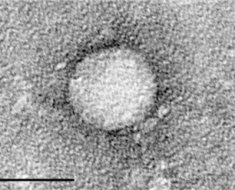The term phobia describes a pathological fear of something or a situation that causes a person extreme anxiety if they have to confront it. A person will therefore go to extreme lengths to avoid the object or situation that causes them such anxiety.
The persistent fear the person experiences is often disproportionate to the threat posed by the entity they are scared of. If the subject of the phobia cannot be entirely avoided, the phobic individual will typically find it extremely distressing to endure, which may lead to manifestations such as fast breathing (hyperventilation), palpitations, flushing, sweating, muscle tension and pains, indigestion, diarrhea and feeling dizzy or faint. It may also lead to loss of sleep and anxiety.
The term trypophobia is used to refer specifically to a pathological fear of objects that have an irregular pattern of holes, such as bee hives, lotus seed heads or ant hills. The term trypophobia was first used to describe this phobia in 2005. However, the condition is not yet recognized and listed in the American Psychiatric Association's Diagnostic and Statistical Manual of Mental Disorders or any other scientific literature.
Trypophobia was first described by British researchers Arnold Wilkins and Geoff Cole, who say they were the first people to investigate the phobia. Wilkins and Cole believe the foundation for this adverse reaction may lie in biological revulsion rather than a learned cultural fear.
In the peer reviewed journal Psychological Science, the researchers wrote that the reaction is triggered by the brain associating the shapes with danger. They described individuals who reported feeling itchy, shuddering and experiencing a skin crawling sensation when they saw clusters of holes in honeycomb, soap, cheese, plants, wounds, meat, wood, or coral. Some of the phobic individuals would also experience panic attacks and feel physically sick on viewing the holes. Examples of the reasons given for these reactions included being disgusted by the holes and fearing that something may be living in them.
Sources
- http://www.centraldigit.com/SJArticle-trypophobia.pdf
- http://pss.sagepub.com/content/early/2013/08/23/0956797613484937
Further Reading
- All Phobia Content
- What is a Phobia?
- Causes of Phobias
- Types of Phobias
- Diagnosis of Phobias
Last Updated: Feb 27, 2019

Written by
Dr. Ananya Mandal
Dr. Ananya Mandal is a doctor by profession, lecturer by vocation and a medical writer by passion. She specialized in Clinical Pharmacology after her bachelor's (MBBS). For her, health communication is not just writing complicated reviews for professionals but making medical knowledge understandable and available to the general public as well.
Source: Read Full Article





